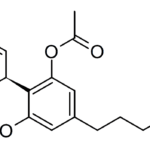Artificial intelligence (AI) is transforming a number of major industries, such as manufacturing, security, healthcare, and more. AI is as well revising how we know interpersonal communication. Thanks to machine translation (MT), translation is becoming faster and more organized. People no longer need to worry about speaking in their native languages to their non-native counterparts: MT technology has eased the burden. With increased time-to-market speed and removed human error in translated content, human involvement is minimal – the same for editing and reviewing the quality of the machine-translated text.

Image by rawpixel.com on Freepik
This article seeks to discuss the different ways in which AI, through MT, has made translation fast and more efficient. Here are the specific areas being looked at in detail:
- What is Machine Translation?
- Elimination of Repetitive Tasks Through AI Automation
- Collaborative Smart Decision-Making Between Humans and Machines
- Speed, Cost, and A Wide Array of Languages
- The Future of Machine Translation
- Key Takeaways
What is Machine Translation?
MT refers to the process of using AI to translate content automatically from one language (also called the source) to another (referred to as the target) exclusively without human involvement.
Translation using computing power began in the 1950s and has significantly improved to date. The base-level quality of MT output has been the center of development, with data scientists working on the statistical machine translation to neural machine translation, bringing what can be termed as a ‘near-perfect’ output that requires minimal post-editing by humans. The end result are meaningful, passable translations nuanced from the original text.
The choice of MT engine used is what determines the time and cost savings on the user’s end. Just like the numerous text annotation services out there doing exemplary text annotation for machine learning, there are various MT engines to pick from. Compared to human translation, MT is fast and cost-effective, and the MT output’s quality is incomparable.
Elimination of Repetitive Tasks Through AI Automation
For enterprises that deal with globally competitive consumer products, there is always the headache of translating a million copies of user manuals and product descriptions all at the same time. Such repetitive tasks and the number of repetitions needed tend to increase with the growing market and consumer demand. In the past, these companies would translate the same text several times manually, then check for consistency after they were done. The manual process proved to be tiresome as massive projects that required more repetition increased.
AI translation is transformative in the translation industry, notably because of its ability to reduce manpower and the demand for human translation services. Moreover, the risk of inconsistency is dramatically reduced as translated content can be inserted where there is repetition. In the end, translators are able to focus on maximizing the MT output’s quality and minimizing repetitive tasks.
Collaborative Smart Decision-Making Between Humans and Machines
There is no way AI translation technology can surpass human cognitive capabilities, but it can streamline repetitive tasks that would otherwise be done by human translators. AI translation is simply reducing human involvement in the translation process, thereby reducing the cognitive toll that the repetitive nature of translation takes on the human mind. In fact, psychologists reveal that the human mind was not engineered to ‘multitask’ or take on several repetitive tasks at a go. The latter would result in mental overload, which typically ends up being catastrophic.
Scientific studies also point to the fact that a high level of task repetitiveness leads to a mental strain that affects an individual’s performance. In other words, a person’s well-being deteriorates, and productivity reduces in return. In light of the devastating effects of repetitive tasks resulting from mental overload on the human mind, the lesser the cognitive fatigue, the sharper the mind becomes, and the smarter the decisions are made. AI through MT only requires the human translators to provide the basic commitment without much of the risk of burnout that would rather be caused by routine, repetitive tasks.
Speed, Cost, and a Wide Array of Languages
Perhaps the most obvious advantage is how fast and cost-efficient MT has proven to be. AI translation is instantaneous, availing thousands of translations almost in seconds, conveying the message in record time and saving resources. Many businesses owe MT their overall customer satisfaction through the speed at which they receive translations. In addition, the shorter the translation process, the quicker the texts are delivered. However, the outstanding thing about the whole process is the affordability of the MT services, which resonates with the expectations and budgets of many customers.
Surprisingly, MT supports all languages in the world. AI translation can translate texts from any language out there almost immediately, saving human translators a huge deal of time, post-editing included.
The Future of Machine Translation
The advent of machines and AI has reimagined life as far as communication is concerned. The more multilingual communities become, the clearer and easier it is for humans to communicate and come closer, thanks to MT. Although the involvement of AI in translation looks like a potential threat to translation companies and language learning, there is a growing opportunity for translation companies to train the machines to make them more intelligent and diverse. A perfect picture of the future would be looking at machine translators and human translators working together, bringing the world closer through language and interaction.
Key Takeaways
To wrap up, it is evident how digital technology, such as AI, has given numerous opportunities to professionals to streamline their workflows for maximum productivity. Looking at the history of translation, for example, human translators would transcribe audio before translating them into other languages, a process that would take hours. Today, MT makes it possible for human translators to run files through MT engines and receive the translated text almost instantly, then post-edit the texts to make them more palatable to a human audience. MT technology, therefore, has removed the repetitive nature of tasks that posed cognitive challenges to the human mind.
However, although MT has been doing a splendid job at repetitive tasks and word-by-word translations, it is by no means perfect. There are still linguistic and cultural nuances of localization that MT engines still struggle with. Translating marketing material, for example, would still need a human touch to add the right tone of voice and make it sound more customer-centric, depending on the customers’ culture and geographic location. Therefore, there is still the need for human translators to work in tandem with machine translators to make the output more humane and natural.






